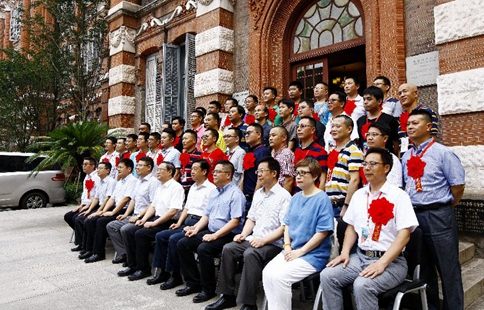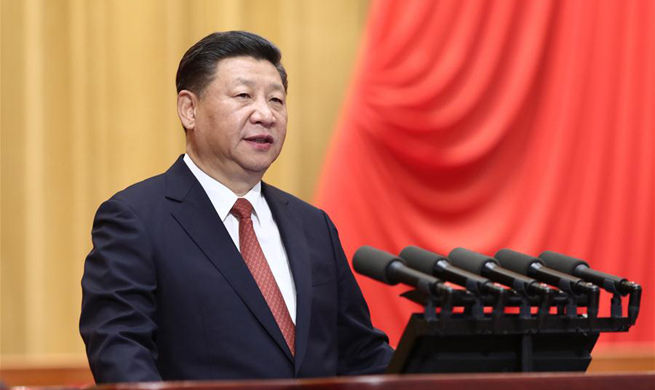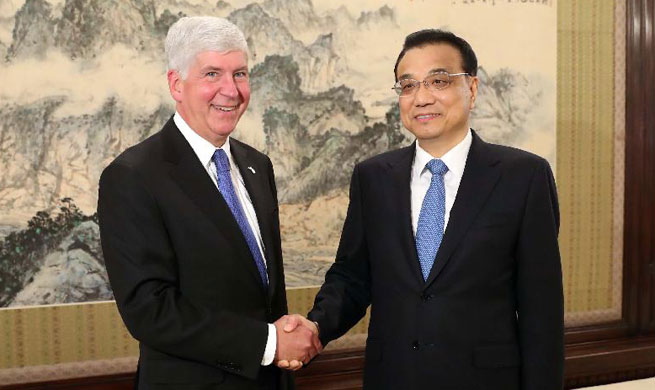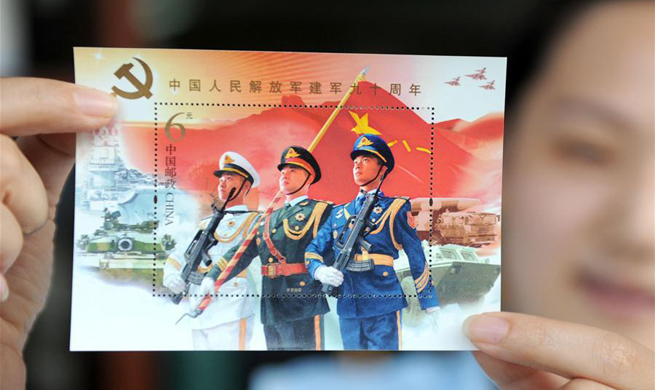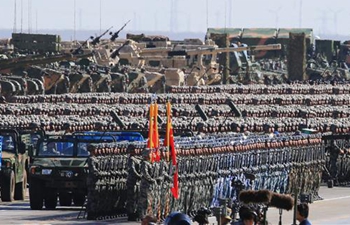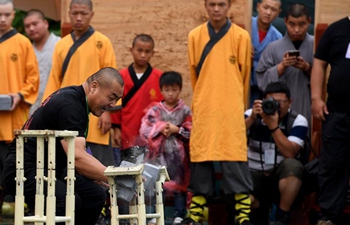SAN FRANCISCO, Aug. 1 (Xinhua) -- A team of researchers have identified the mechanism behind unique thermoelectric properties in cesium tin iodide, or CsSnI3, a type of crystalline semiconductor that blocks most heat transfer while preserving high electrical conductivity.
The exotic traits, attributed by the researchers to what is called collective rattling effect and reported in a paper published this week in the Proceedings of the National Academy of Sciences, could help reduce heat buildup in electronic devices and turbine engines, and possibly convert heat into electrical current.
First discovered decades ago as a semiconductor material, cesium tin iodide was observed to have one of the lowest levels of heat conductivity among materials with a continuous crystalline structure. Researchers earlier thought that its thermal properties were the product of "caged" atoms rattling around within the material's crystalline structure.
Such rattling can disrupt heat transfer in a material.
"We initially thought it was atoms of cesium, a heavy element, moving around in the material," noted Peidong Yang, a senior faculty scientist at the Materials Sciences Division of the U.S. Department of Energy's Lawrence Berkeley National Laboratory, or Berkeley Lab, who led the study.
In the new research, to measure the thermal conductivity of the material, Yang and his colleagues bridged two islands of an anchoring material with a cesium tin iodide nanowire. The nanowire was connected at either end to micro-islands that functioned as both a heater and a thermometer. They heated one of the islands and precisely measured how the nanowire transported heat to the other island.
The researchers at Berkeley Lab also performed scanning electron microscopy to precisely measure the dimensions of the nanowire. They used these dimensions to provide an exacting measure of the material's thermal conductivity, and then repeated the experiment with several different nanowire materials and multiple nanowire samples to compare thermoelectric properties and verify the thermal conductivity measurements.
What team found in cesium tin iodide, Yang said while talking over the phone about the first published results relating to the thermoelectric performance of this single crystal material, was the lowest heat conductivity recorded among the type of crystalline semiconductor.
Jeffrey Grossman, a researcher at the Massachusetts Institute of Technology (MIT), performed theory work and computerized simulations to help explain what was observed.
"We believe there is essentially a rattling mechanism, not just with the cesium. It's the overall structure that's rattling; it's a collective rattling," Yang explained. "The rattling mechanism is associated with the crystal structure itself," and is not the product of a collection of tiny crystal cages.
Within the material's crystal structure, the distance between atoms is shrinking and growing in a collective way that prevents heat from easily flowing through. As it is composed of an orderly, single-crystal structure, electrical current can still flow through it despite the collective rattling.
"Its properties originate from the crystal structure itself. It's an atomic sort of phenomenon," said Woochul Lee, a postdoctoral researcher at Berkeley Lab and lead author of the study, adding that "a next step is to alloy this (cesium tin iodide) material" to improve its properties.
For this particular cesium tin iodide material, cooling applications may be easier to achieve than heat-to-electrical conversion, Yang said. A challenge is that the material is highly reactive to air and water, so it requires a protective coating or encapsulation to function in a device. Also, just as computer chip manufacturers implant a succession of elements into silicon wafers to improve their electronic properties, with a process known as "doping," scientists hope to use similar techniques to fully exploit the thermoelectric traits of this semiconductor material.







